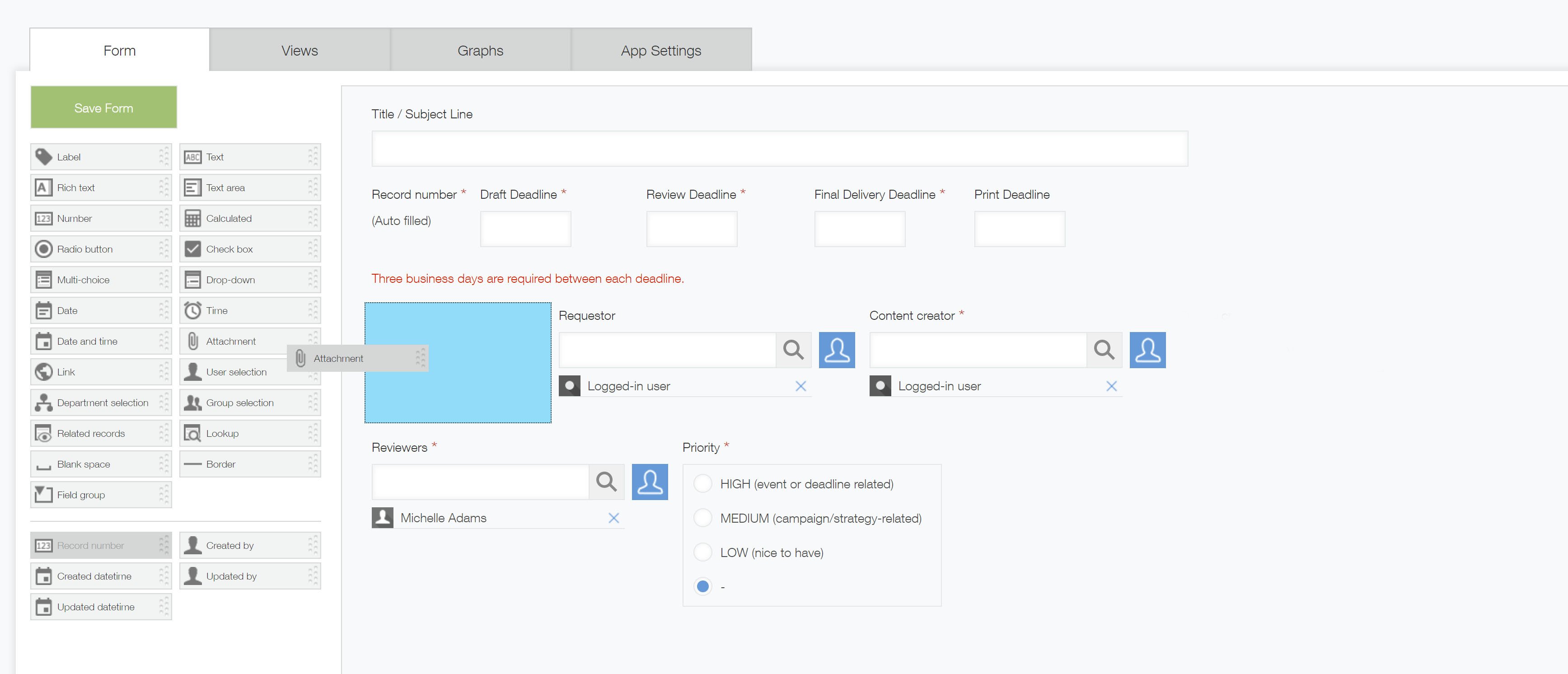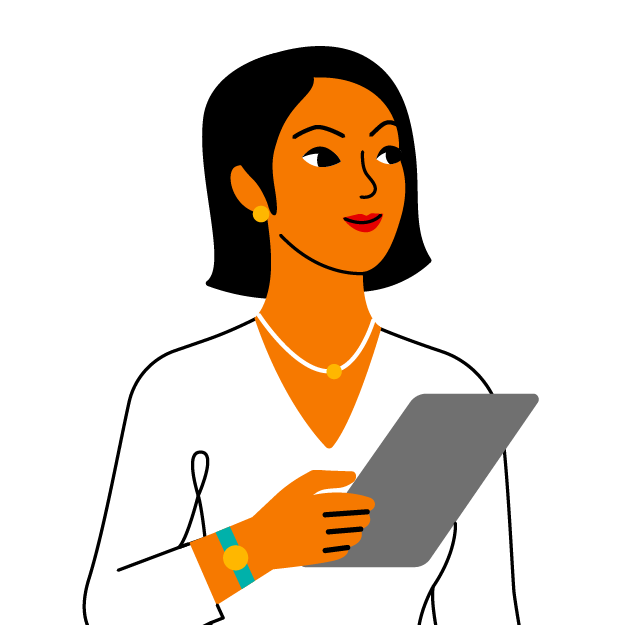No matter what industry you’re in, your job title, your specialization, or educational background, software is likely a fundamental part of your daily life. But getting your software to deliver better workflows, automation, and data often requires more time, money, and trial-and-error than most tools let on.
A subscription that was intended to make life easier makes it more complicated, and teams are left with tools that just sort-of work rather than fit exactly what they need.
Enter: no-code/low-code programming.
With the advent of no-/low-code software development, people don’t have to commit to out-of-the-box software tools that just-sort-of fit their needs. They also don’t have to rely on an overworked internal IT team or a third-party developer to build something custom (a process that’s often slow and expensive). Instead, they can build what they want themselves using drag-and-drop interfaces as complicated as Microsoft’s Word Menu.
No-code/low-code software development tools mark a new era for businesses—and a new opportunity for business professionals. But how did we get here? And what does this new step in software development mean for us as individuals? We’ll look at what’s driving this change and why it’s time we embrace the idea of becoming “citizen developers.”
Times change. Technology advances. Work evolves.
Technology is central to the way we work. As technology changes, we have to change with it. Luckily, reskilling for the new digital world of work isn’t as painful as it might seem. Turns out, you don’t have to throw out your prior skills and toss yourself into a coding bootcamp. If you’re into that stuff, then more power to you. But if you’re not, there’s a way to survive in a world consumed by software and automation while remaining exactly who you are, professionally speaking.
In fact, being exactly who you are is going to be what makes you most valuable. You just have to adapt.
It’s been said that in the near future, every company is going to become a software company. And that means every employee is going to have to become a software developer. “Adapting” doesn’t mean just getting more comfortable with technology—it means rethinking your relationship with software. For a long time, businesses have relied on programmers and other IT professionals to develop the software that helps us get things done. But as the demand of technological growth has increased, IT has struggled to keep up—and this isn’t slowing down either. As IT demand continues to increase—and existing teams become increasingly challenged to meet it—the gap will only continue to grow.
So what does all this mean for you?
It means you need to become part of the solution. We’re here to help you understand this game-changing shift—how we got here, why it matters, what it means for you—and how a new set of intuitive visual programming tools is transforming the future of work by putting the power to build software in anyone’s hands.
“In the future, every company will become a software company.”
-Marc Andreessen, American Entrepreneur & Investor
Why You Aren’t a Programmer...Yet.
You may not know much about the early days of the computer aside from the basics. Computers were huge, there were just a few in existence, and only a handful of people were skilled enough to operate them. Programming looked very different than it does today. The main thing to understand is this: in the days of vacuum tubes and punch cards, we were certainly not all software developers.
What’s interesting is that the history of computer programming isn’t just an indication of how far we’ve come—it’s also an indication of where we’re headed. As computer technology has evolved, it has also become increasingly accessible. Room-sized computers gave way to build-it-yourself home kits, which eventually led to off-the-shelf personal computers in homes everywhere. But it’s not just that more and more people gained access to computing technology—they gained the ability to program it, too
Innovation Impacts Accessibility
Innovation continues to make technology more and more accessible. In the early days of the computer, a single computer filled an entire room, and only a select few knew how to operate it. Even the first personal computers for sale were extravagantly priced at $750 back in 1971, which if adjusted for inflation is equal to $4,659 today. Now, any non-engineer can not only purchase a computer for a few hundred dollars, but also slip it into their back pocket.
Software development used to require extensive education and qualification, but each major technological innovation has broken down some of these barriers—so many barriers that at this point, they’ve almost disappeared entirely. So, while you may not be a programmer yet, history has set you up to become one—just not in the same way as in the past.
The original vacuum tube programmers were mathematicians. Programming meant operating 1000+ various switches, plug panels, and circuits in order to solve linear equations. Punch card programmers could be mathematicians or engineers. They had to manually write their code on coding sheets, and then plug them into the computer using keypunches. There was no room for error, as a simple typing error would necessitate re-punching the entire card. The first electronic digital programmable machine was used by British codebreakers to decipher German ciphers during World War II.

The ENIAC, completed in 1946, required 1,800 square feet of floor space and used over 18,000 vacuum tubes to operate.
Today’s textual programmers don’t necessarily need to be mathematicians or engineers—many of them are just hobbyists. This slow but sure shift from exclusivity to inclusivity in the field of software development is the democratization of the industry in action—and it’s happening faster than ever.
Today, there are approximately 25 million programmers worldwide. You don’t need the sophisticated education that the original vacuum tube programmers needed to do their jobs, and you don’t even need the intensive training that today’s programmers have. While it’s true that 25 million is a lot compared to the original handful of jobs, it’s nothing compared to where we’re headed next. The latest major paradigm shift breaks down the last remaining barriers to access, and is bringing the ability to develop software to everyone. It’s called visual programming.

An example of a drag-and-drop interface that allows users to "visually program" business applications for their workflows.
The democratization of software development isn’t just a cool perk of technological advancement. It’s a necessity. As software increasingly takes over every industry, the demand for developers continues to grow. Software demand is outpacing the speed at which we are producing developers, and there’s a widening gap between the supply and demand of digital skills. Despite the cute names the media gives it—ie. the developer drought, the programmer shortage, the battle for tech talent— this is a serious problem. As of 2019 there were “over 920,000 unfilled positions for software engineers in the U.S. alone and only 165,000 potential applicants.”
Why It’s Time to Start Thinking of Yourself as a Programmer
The average enterprise has 464 custom applications deployed today. Business spend on software grew an average of 7% a year over the last 25 years. In 2018, the average enterprise was projected to develop & deploy 37 new applications every year. There’s already a lack of IT resources available to the majority of our businesses, and whether we realize it or not, many of our teams are resorting to unsustainable off-the-shelf solutions—or “shadow IT apps.”
Shadow IT consists of any application, program, or system that a company builds or buys without IT oversight. It can be a monthly subscription to applications, like Slack or Dropbox, or department-specific apps like Salesforce or Zendesk. Apps like these—or ones built in internally—are largely ungoverned, rarely officially approved by the company, and significantly increase technology spend.
By 2020, a third of successful attacks experienced by enterprises will be on their shadow IT resources.” -Gartner’s Top 10 Security Predictions 2016
The majority of these apps aren’t even making your job easier. In fact, they’re making it more difficult—causing you to constantly toggle from multiple platforms, databases, and applications over the course of each day. Like many others, your business may not see any alternatives or a way out, so you eat the costs for these apps—apps that, in many cases, are wildly inefficient.
Conclusion: It's A New Era Of Software Development, And You're At The Center Of It
We all need software—now more than ever—but we have to face the reality that we’re not going to get it from fresh graduates with computer science degrees. There just aren’t enough to go around. We have to stop relying on programmers, and instead change our definition of who programmers are. If you want to survive, it’s time for you to become a programmer—or risk becoming about as relevant as a switchboard operator or pinsetter (the guy who sets up the pins in a bowling alley). He didn’t have the privilege of seeing what was coming, but you do. You might be scared about a machine taking over your job, but there is a way to change with the times. The technology is here. And it’s here to meet you where you’re at.
Want to learn how you'll become a software programmer and what it can mean for your career? Check out part two of our series:
Read [Part 2] How You'll Become a Software Programmer With No-Code Tools
About the Author











